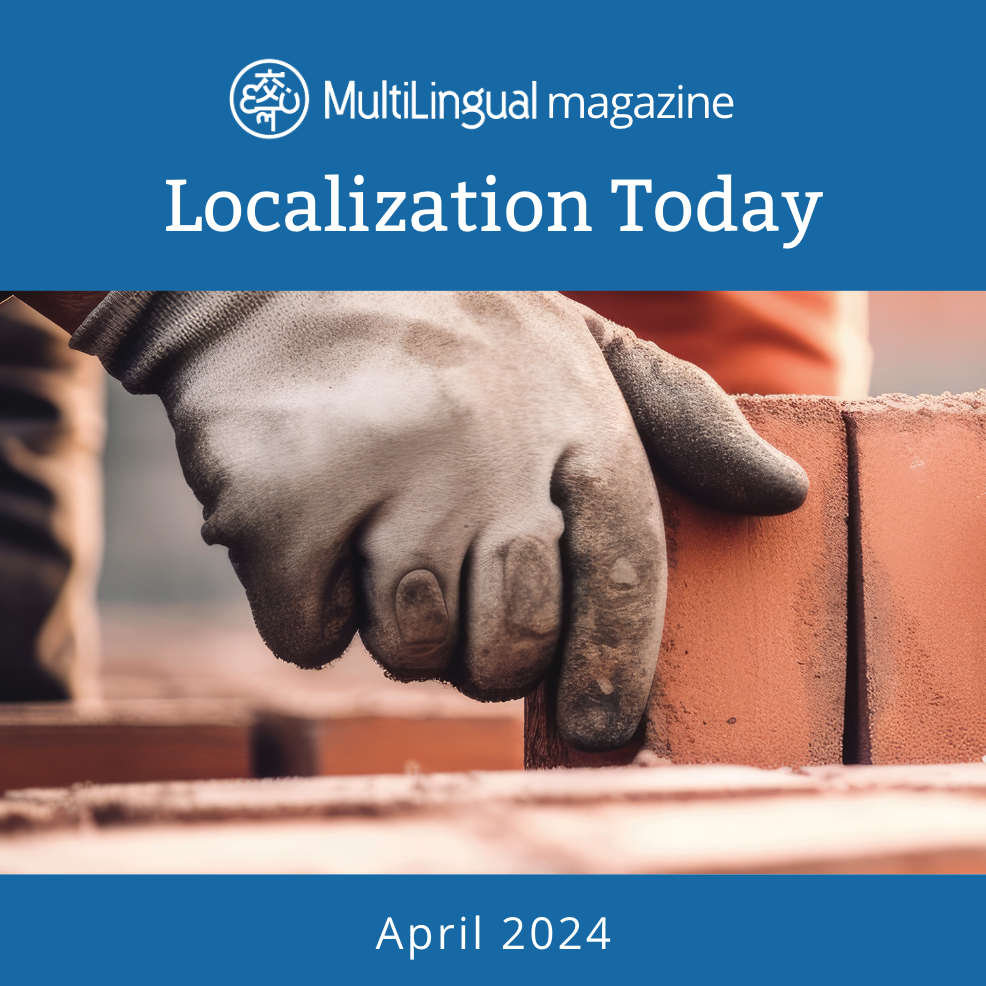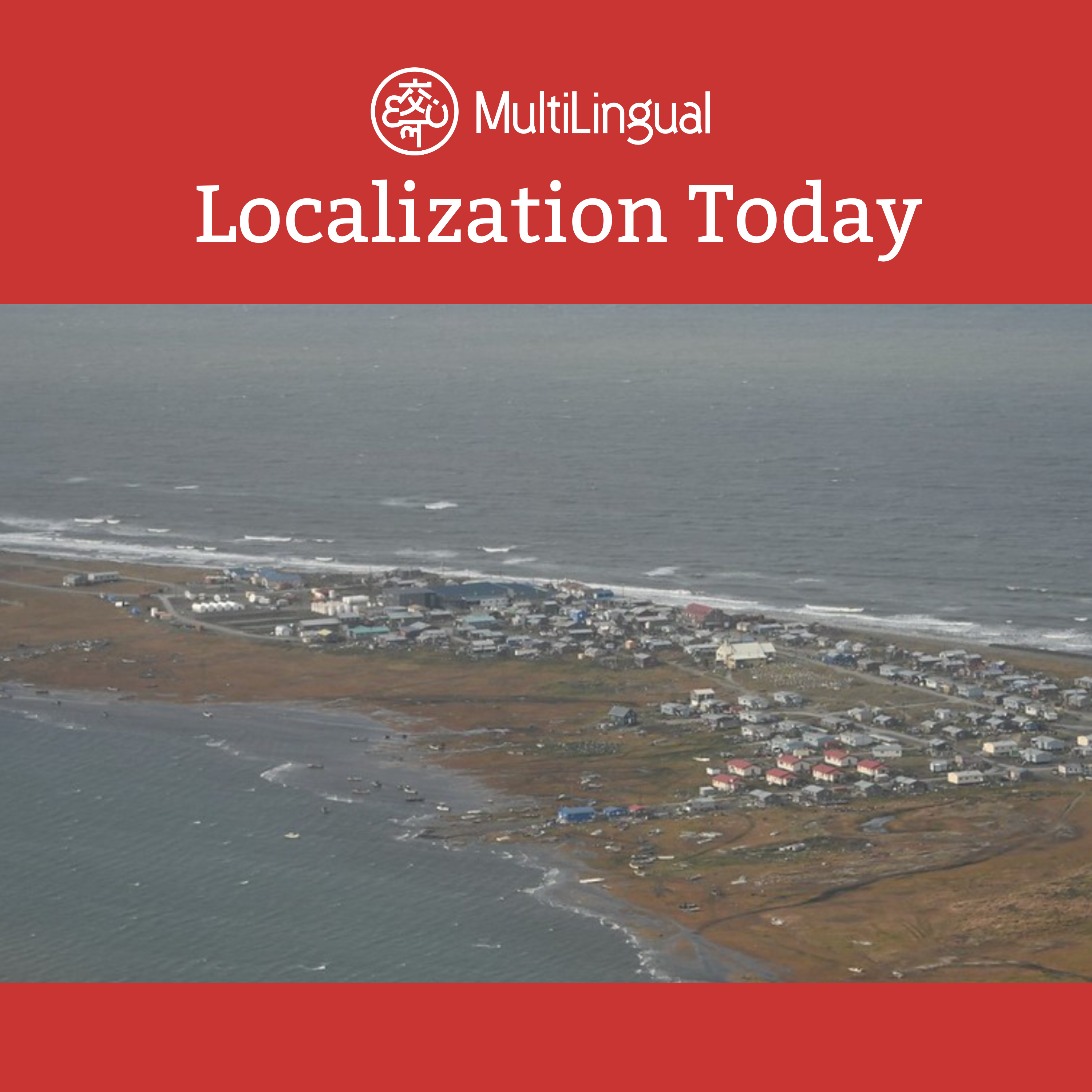Episode Transcript
[00:00:00] Why we're different the State of American Sign Language Interpreter Education by Joshua Pennis American Sign Language ASL interpreters perform the same linguistic task as their spoken language peers, yet they operate in a different ecosystem with different levels of effectiveness.
[00:00:19] The laws that govern their usage are different, the consumers they serve are vastly more empowered and their educational journey is on average much longer, more academic and less effective than those of their spoken language peers.
[00:00:34] A 2006 study1 assessed 2091 ASL interpreters working in the United States US public school system and found their average Educational Interpreter Performance Assessment APA score was only 3.2 out of 5.0 despite an average of 8 years of experience.
[00:00:52] To give context, only 10 states in the US accept an APA score lower than 3.5 for employment as an educational interpreter. This suggests that the average interpreter working with deaf children would have failed their state's minimum standard in 40 out of the 50 US states too. The spoken language interpreting ecosystem typically relies on bilinguals with minimal formal training for community based consecutive work while reserving master's level training for simultaneous conference or diplomatic interpreting.
[00:01:24] ASL interpreters in the US Are predominantly trained through the post secondary system ranging from one year certificates at community colleges to master's level practice degrees.
[00:01:36] Most enter these programs especially at the undergraduate level, with little to no linguistic fluency in asl.
[00:01:43] This lack of fluency creates significant challenges for interpreter training programs which must not only teach students the skill of interpreting, but also develop their foundational ASL fluency, a stark contrast to spoken language interpreting programs that typically require fluency in both working languages upon admission.
[00:02:03] These factors contribute to a persistent supply and demand issue. The industry is experiencing increased demand for interpreters, yet the pipeline struggles to produce enough qualified professionals ready for even entry level assignments. 3.
[00:02:17] To understand how ASL interpreters are educated and why so many graduates struggle to achieve certification and professional competency, we will take a deeper look at the history, structure and challenges of ASL interpreter education in the US Why ASL Interpreting is Different While the fundamental act of interpreting is the same, regardless of language pair, signed or spoken, there are ways in which the environments produce starkly different demands on the interpreters.
[00:02:47] The vast majority, nearly 90% of ASL interpreters, are second language learners of the language for acquiring ASL later in life rather than from birth.
[00:02:58] This means they require significant time to reach fluency, no different from learning a spoken language.
[00:03:04] The contact time in their programs is typically insufficient to train them both in language fluency and in interpreting.
[00:03:11] Additionally, the deaf and hard of hearing consumers of the services frequently acquire their language differently, 96% have hearing parents and 71% do not learn ASL at home. 5 meaning ASL fluency is more idiosyncratic across users compared to spoken languages.
[00:03:31] The above two factors have profound implications. In the average ASL interpreted interaction, neither the interpreter nor the deaf consumer is likely to be a native user of the language from birth.
[00:03:43] This causes a great deal of negotiation of meaning to happen in real time, often when others in the interaction aren't expecting it.
[00:03:51] Additionally, the work of an ASL interpreter is usually by default simultaneous, a skill seen in the spoken language world as advanced and the purview of elite interpreters.
[00:04:02] They practice often as generalists in a wide range of scenarios where spoken language interpreters typically do not work.
[00:04:10] For example, ASL interpreters are working in medical settings for deaf patients and deaf doctors.
[00:04:17] They are in the jury box and behind the defendant's table.
[00:04:21] They are interpreting theoretical physics, doctoral classes, and developmental English.
[00:04:26] They are nearly everywhere interpreting just about everything across the breadth of human life.
[00:04:32] Lastly, ASL interpreters serve an empowered and savvy consumer base.
[00:04:37] Laws such as the Americans with Disabilities Act, ADA, the Rehabilitation act of 1973 and state level mandates have teeth that organizations such as the century old national association of the Deaf exercise to ensure that the right to communicate effectively is realized. See Figure 1 for a timeline of these laws.
[00:04:57] Many deaf people start using interpretas almost daily as early as 3 years old and continue doing so their entire life.
[00:05:05] In short, they have more experience working with interpreters, a better understanding of their rights, and better resources to speak up when things aren't working right.
[00:05:16] All of these factors have led to the creation of a system that strongly prefers national certification, at least a four year degree, and in many cases state licensure to practice.
[00:05:27] Despite these demands, the education to certification pathway remains inconsistent with significant variation in program quality, educational approaches and graduate outcomes.
[00:05:40] A Gap between Training and Certification My view is that the gold standard for training an ASL English interpreter is a bachelor's degree in ASL followed by a master's degree in interpreting practice.
[00:05:55] However, this is exceedingly rare due to the cost, time commitment and limited availability of graduate programs.
[00:06:03] Today, interpreter education is spread across all levels of post secondary education in the US ranging from short year long certificates to practice based master's programs, Certificate programs typically 2530 credits at community colleges associate degrees typically 60 credit hours across two years.
[00:06:25] Some are terminal degrees that do not transfer towards a bachelor's bachelor's degrees typically 120 credit hours across four years master's programs only five programs in the US one of which is theory focused doctoral programs only two PhD programs, both of which are theory focused Given the complexities of language and skill development needed for ASL interpreters, many if not most of these programs fail to produce qualified interpretas who are ready to work independently.
[00:06:58] This is acutely true of certificate and associates programs that attempt to teach language and interpreting in one or two years.
[00:07:06] In fact, a recent study 6 showed that students transferring from two year to four year programs lacked ASL fluency necessary to begin interpreting coursework, requiring additional remediation.
[00:07:19] What's even more surprising is that many of these individuals were already working as professional interpreters.
[00:07:26] In defense of Community Colleges two year associates programs are an integral part of the American post secondary educational system, democratizing education and lifting many to greater opportunity.
[00:07:40] Community colleges are public institutions that generally accept all students who hold a high school diploma or its equivalent.
[00:07:49] Students frequently attend part time at night and on weekends while working a job or raising a family.
[00:07:55] They are more accessible as tuition tends to be a fraction of the cost of a typical university.
[00:08:01] Community colleges focus on technical programs such as information technology and auto repair as well as the foundational educational curriculum required for a four year degree.
[00:08:12] Through articulation agreements with four year universities, someone with a general community college education may enter certain four year universities as a third year student.
[00:08:24] This allows someone who underperformed in high school or someone who can't afford the university tuition to have a shot.
[00:08:31] And lastly, they are intensely local.
[00:08:34] The median distance from an American's home to the community college they attend is only 10 miles, 7 making them even more accessible to a non traditional student.
[00:08:46] My own mother dropped out of high school to get married in 1968.
[00:08:50] In 1980 she found herself divorced with two kids and no realistic path to care for her family.
[00:08:57] After obtaining a high school equivalence credential known as the GED in the US she entered her local community college where she took a class at a time for over a decade, leading to a degree that got her office work by which she sustained her family and bought her first house.
[00:09:15] That tradition extended to me as I entered the same community college and completed the first two years of my bachelor's degree at around one third of the price for a student paying his own tuition. This kept me from incurring a burdensome debt early on and started a path that allowed me to get a master's degree in Applied Linguistics from my local university and later an Ivy League Master of Business Administration mba.
[00:09:39] I also return to the community college as an interpreting professor, interim program head, and chair of the advisory board for the associate's degree in interpreting.
[00:09:49] My investment in the system has given me insights as to its efficacy and usefulness for students.
[00:09:56] My experiences from the student, faculty, and governance sides of the community college system tells me that there is a place for the community college in the interpreter education ecosystem, but not as independent programs.
[00:10:09] The best use of a two year program's time is focused on ASL learning in preparation for transfer to a four year degree program, preferably a bachelor's degree in asl, a trend that is notably on the rise.
[00:10:23] In this role, community colleges can continue to democratize education, offer second chances for students who underperformed in high school, and produce larger numbers of students to matriculate into traditional programs and eventually graduate employable.
[00:10:39] At the same time, by abandoning their interpreting degrees and focusing on ASL education, they can avoid the tragedy of wasting a promising student's time and money on a non transferable interpreting degree that has nearly no chance of producing an interpreter capable of getting a job after graduation.
[00:10:58] Curriculum Issues There are many areas to explore related to how the curricula of interpreting programs may fall short.
[00:11:06] However, there is one incredibly profound area that is a collective industry failure opportunity for students to have real world supervised interpreting experience.
[00:11:17] Most interpreting degree programs include a supervised practice course, such as a practicum or internship, that requires a certain number of experiential hours.
[00:11:27] Readers will be familiar with the rule, first proposed by Anders Ericsson and popularized by Malcolm Gladwell, that humans need 10,000 hours of practice to master a skill.
[00:11:38] What is missing from this overgeneralization is the need for immediate feedback for this to be true.
[00:11:44] 9 When a musician, for example, practices for 10,000 hours, they can hear their mistakes immediately and try again.
[00:11:52] A practicing interpreter often has very little feedback in the moment that they've misarticulated or misconstrued, leading them to not only fail to improve but worse, to more deeply ingrain their mistakes into their practice.
[00:12:05] The supervised feedback element of an interpreter's education is therefore critical and an essential requirement for Commission on Collegiate Interpreter Education accreditation.
[00:12:17] It is one of the few times in the life of an interpreter when they will receive immediate and purposeful feedback on their practice.
[00:12:24] Programs throughout the country struggle to find industry partners who will accept a student and let them do more than just observe.
[00:12:31] This failure of industry to support education and to provide these critical opportunities feeds the negative loop that leads to many graduates seeking work outside of interpreting program distribution at the time of writing. I have been able to identify 125 ASL interpreting programs in the U.S.
[00:12:52] these programs collectively offer 156 certificates or degrees at various levels.
[00:12:59] The highest level credentials at each institution represent the following Graduate degree 6 Bachelor's degree 41 Minor 2 Associate's degree 66 Certificate 9 this count of programs declined during the COVID 19 pandemic by 7%. 8 this decline may now be exacerbated by federal funding reductions announced by the US Department of Education.
[00:13:28] While writing this article, two ASL and interpreting program closures were announced in response to federal funding cuts, along with a number of deaf education programs that to some extent also feed into the interpreter ecosystem.
[00:13:42] Even though Deaf communities are richly diverse, the institutions responsible for training interpreters do not reflect this reality.
[00:13:50] There are currently no interpreter education programs housed at historically Black colleges and universities, limiting access to the profession for a key underrepresented demographic in the field.
[00:14:03] Research for this article suggested that 92% of interpreter education program directors are white and only 18% are deaf.
[00:14:13] This lack of diverse leadership amplifies concerns that programs are not preparing White interpreters to successfully work with with the breadth of a multicultural consumer base and that the pipeline is not welcoming to interpreting students of color. 10 Continuing the long time imbalance in race amongst practicing interpreters beyond demographic disparities, geographic accessibility is another significant barrier.
[00:14:39] Some major metropolitan areas such as New York City and Seattle lack an interpreter training program at all, creating education deserts where prospective interpreters have few if any local options for formal training.
[00:14:54] Other academic deserts exist throughout the U.S. see figure 2. Leading students in these areas to relocate, commute long distances, or rely on online education, which may lack the hands on immersive experiences necessary for developing ASL fluency and interpreting skills.
[00:15:13] Attempts at Standardization the educators involved in creating and running this system have made attempts to improve it over the years.
[00:15:22] The Conference of Interpreter Trainers, which was formed in 1979, offers a forum for research on interpreter pedagogy, professional discussions, and teacher improvement.
[00:15:34] Additionally, the CCIE, which was founded in 2006 by six stakeholder associations including the CIT, has established accreditation standards for interpreter training programs.
[00:15:47] These standards include measures on quality, knowledge and skill competencies, requirements for at least 300 hours of field experience, and measurable outcomes, including post graduation employment.
[00:15:59] Out of 125 active ASL interpreting programs in colleges and universities in the U.S.
[00:16:06] only 18 are accredited, or just 14%.
[00:16:10] The limited geographical distribution of these programs is especially troubling to the creation of a sustainable talent pipeline for the industry.
[00:16:19] Industry, academia, collaboration, bridging the gap between interpreter education and the workforce requires stronger partnerships between training programs and the interpreting industry.
[00:16:31] As discussed, new graduates find themselves unprepared for the realities of professional interpreting not because they lack potential, but because they haven't had sufficient structured hands on experience.
[00:16:44] Expanding internship opportunities, especially those that provide real world mentorship from seasoned interpreters, would offer graduates the critical exposure they need to develop their skills.
[00:16:56] Businesses and organizations that rely on interpreters must also be part of the solution, opening doors for interns and entry level interpreters to gain practical experience in lower risk settings before they are expected to perform at a high professional standard.
[00:17:12] Industry can partner with key customers to make these opportunities available.
[00:17:17] An example of this is the consortium I was involved in establishing between Sorensen Communications, Purple Communications, Amazon, and Microsoft that offered paid practicum placements for 50 recently graduated ASL interpreters in actual supervised work sites.
[00:17:34] 11 these modest investments pay dividends in pipeline development and ensure a more versatile and work ready interpreter.
[00:17:42] Additionally, employers can look to failed interpreters who graduate from programs for internal support and operations roles such as project management or scheduling.
[00:17:52] These positions can keep talent within the industry and offer them both another path to economic success and potential opportunities to continue growing their language and interpreting skills.
[00:18:04] Diversity and access are also central to solving the ASL interpreter shortage.
[00:18:10] The establishment of interpreter training programs at HBCUs, at Hispanic serving institutions, at tribal colleges, and in underserved regions could significantly expand the pipeline of qualified interpreters.
[00:18:24] These efforts would not only begin to address racial disparities in the profession, but but also increase the number of culturally competent interpreters available to serve diverse Deaf communities.
[00:18:36] Without these intentional investments, the profession risks continuing the cycle of exclusion where interpreting remains a predominantly white, hearing led field instead of one truly built on the merit and talent of the individual.
[00:18:50] Certification and licensure processes also need critical reevaluation.
[00:18:55] The model of training program to certification Licensure to work is somewhat a figment of our imagination.
[00:19:02] A system that encourages a supervised work period where interpreters are credentialed only to work in tandem with fully certified practitioners could begin to establish a framework for a period of supervised practice not unlike the residency system for doctors.
[00:19:18] Conclusion the field of ASL interpreting is at a crossroads.
[00:19:24] While demand for qualified interpreters continues to grow, the current education system struggles to produce graduates who are fully prepared for certification and professional work.
[00:19:35] Addressing this issue will require an industry wide effort, collaboration among stakeholder organizations, investment in better training models, and a commitment to increasing accessibility to inroads into the profession. For those invested in language access this is a call to action to mentor, advocate, and work with the community to build an interpreter pipeline that truly meets modern needs.
[00:20:01] Acknowledgments Special thanks to Emily Girardin and Faith Powell for providing useful feedback during the writing process that improved this article in many ways.
[00:20:12] This article was written by Joshua Pennis, an executive and board leader in Language Access and Disability Services with past roles as CEO of TCS Teams and Senior Executive at Sorensen communications.
[00:20:27] He holds MBAs from Columbia University and London Business School and serves on the Board of the association of Language Companies.
[00:20:35] Originally published in Multilingual Magazine, Issue 243, 8-20-25.


